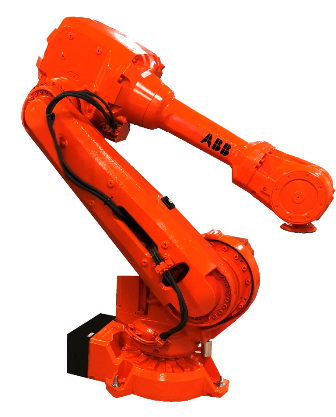Robots Done Right |
Used Robot Sales |

Routing Robots

Robotic routing is a material seperation process that removes excess or unwanted materials from a workpiece with precision and speed. An industrial robot is integrated with a router bit that is attached to an automated high-speed spindle on the end of its robot arm. The robot guides the router to either trim the material to a predetermined depth or to cut through it completely. Routing robots like the FANUC M-20ia are becoming more common in the industrial world and are often found in the automotive, aerospace, marine, and prototyping industries.
The adoption of routing robots is growing amongst manufacturers due to the amount of flexibility they can offer. Routing robots such as the Motoman HP50 are capable of handling more complex parts than human workers or CNC machines including 3D parts. They can produce a clean, smooth edge without leaving burrs on a variety of materials including: fiberglass, polypropylene, polycarbonate, vinyl, acrylic, composite, and wood to name a few. Their ability to trim or cut through a number of materials regardless of thickness provides manufacturers greater freedom within their productions without having to sacrifice quality.
Cycle time is further decreased with the incorporation of robotic routing because they have higher productivity rates. Routing robots can produce more parts per hour than manual routing or CNC machine routing. They can be integrated with tool changers that allow for on demand switching out of tools, so productions continue to run seamlessly no matter what materials the robots encounter. Not only can robots produce more parts per hour, but they can also work around the clock. They do not need downtime for breaks or sleep, unlike with human workers. Robots are capable of run times of up to 100,000 hours before needing any maintenance. Their ability to continuously work allows manufacturers to turn out more products to consumers in a shorter amount of time.
Routing robots, such as the ABB IRB 4600-60/2.05, are proving to be a cost-effective solution for manufactures looking to streamline their material separation processes. These robots increase productivity, repeatability, and quality while helping to simplify a tedious and complex application. Contact us by email mm@robotsdoneright.com or phone (440) 724-6568 today to discuss buying or selling a routing robot.